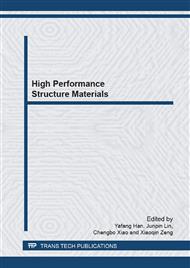p.890
p.899
p.904
p.912
p.919
p.926
p.932
p.937
p.941
Research on Precision Forming Technology of Titanium Alloy Sheet Metal Based on the Principle of the Stress Relaxation
Abstract:
In this paper, a series of relevant theoretical analyses and experimental researches have been carried out for precision forming of a typical aerospace revolver. By use of the material stress relaxation principle, the finite element numerical simulation and the preforming sizing process technology of stress relaxation, it have been revealed that the new process can be used for precision forming of titanium alloy sheet and its forming precision can meet the manufacturing requirements of aerospace sheet-metal parts. The precision forming technology of titanium alloy can also be used to improve the digital manufacturing technologies of aerocraft sheet-metal parts, and thus has potential application prospects.
Info:
Periodical:
Pages:
937-940
Citation:
Online since:
February 2013
Authors:
Price:
Сopyright:
© 2013 Trans Tech Publications Ltd. All Rights Reserved
Share:
Citation:


